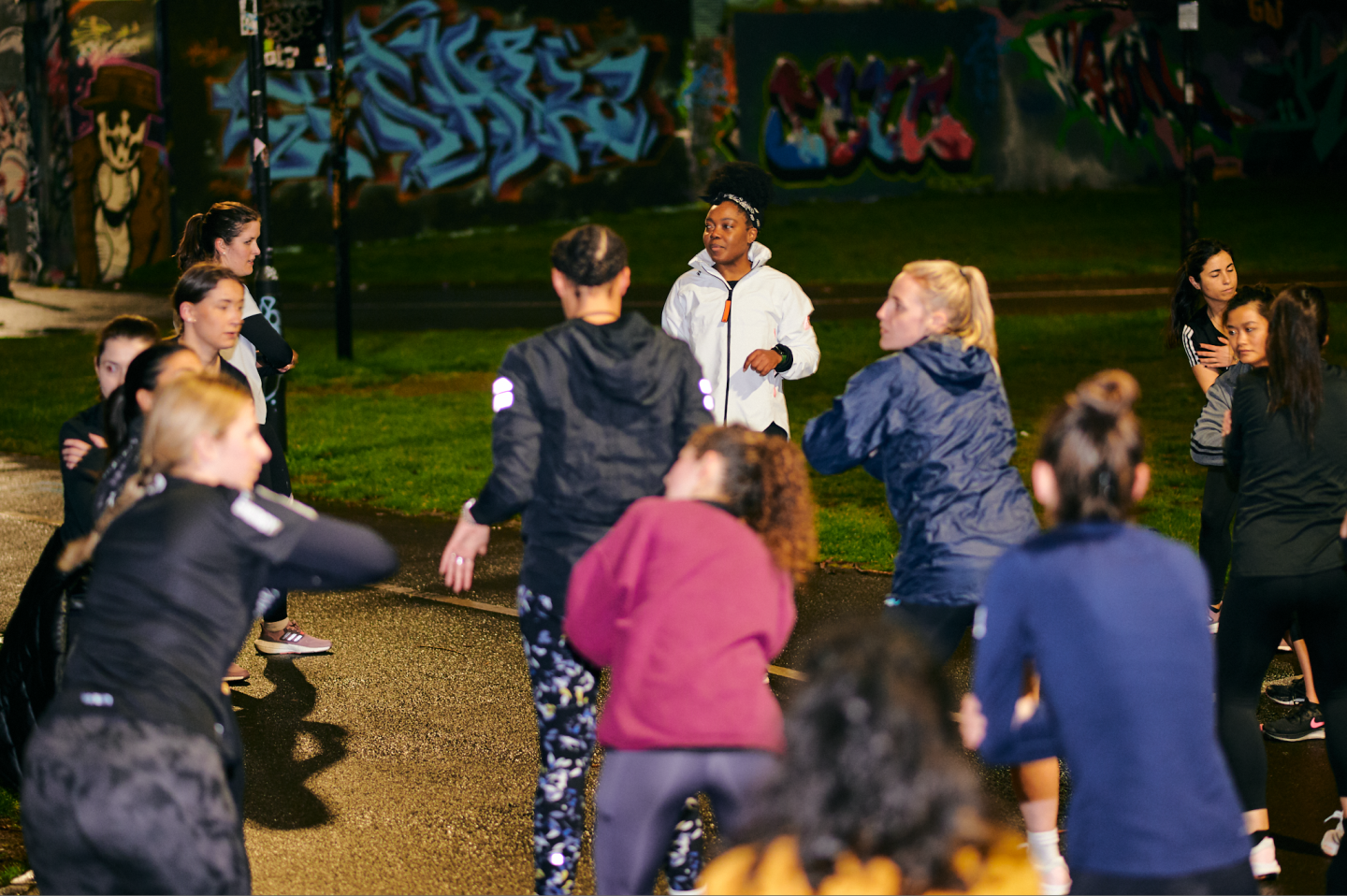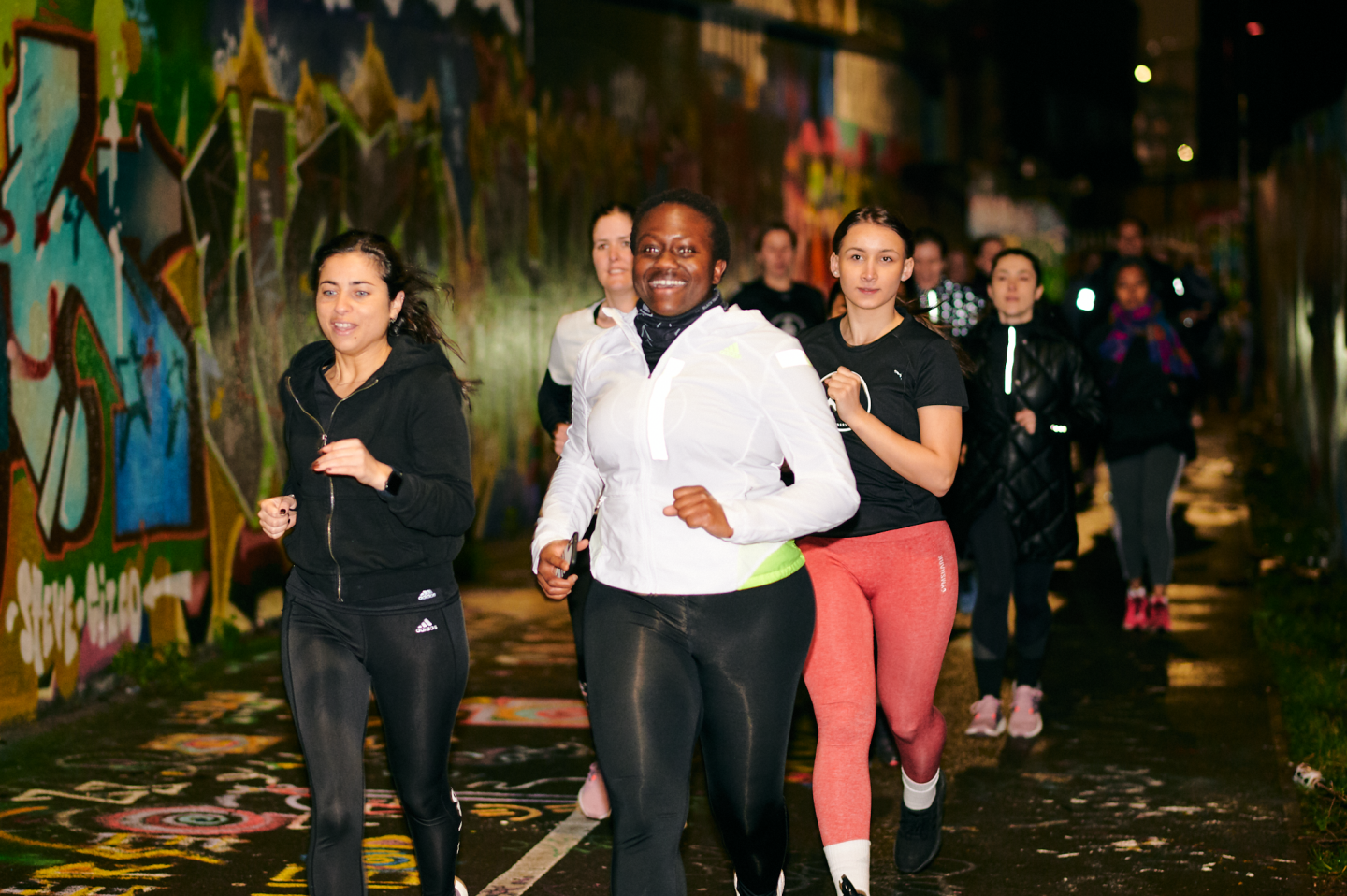This page may contain affiliate links – they are marked with a *. Making a purchase via my affiliate means I receive a small share of the sale.

If you’ve been toying with the idea of becoming a run leader, or specifically, completing the English Athletics Leadership in Running Fitness (LiRF) course, I wrote up my entire experience from sign up to completion here in this post.
I’m not a member of an athletics club, and I very much doubt I will ever be to be honest. Much like the sport of cycling, when I visit the Facebook page or website of local clubs, there’s no-one pictured that looks like me.
I guess it’s also partly because I’m not a competitive runner (anymore). In my teenage years I took part in track and field competitively. These days, I’m more involved in running for the social aspects and to share the benefits with as many others as I can.
I do however enjoy competing against myself, sometimes, and taking part in events from parkrun, through to half marathon distances. And as I’m not the best at holding myself accountable to training, I’ve found running in groups has been the best way to train.
What is a LiRF qualification?
The LiRF is advertised as a course to prepare you to provide a safe and enjoyable running experience for young people aged 12 years and older, and adults of any ability. It’s the first step on the coaching ladder in running.
When I registered, the course cost £190 for individuals not affiliated with an England Athletics (EA) affiliated club. For those who are, the fee is £160.
I did look into joining a club to get the discount, but at this stage it made no sense; none of the clubs had the representation I would be looking for, and the club membership and EA registration either costs the same as the £30 saving or more.
Why Am I Becoming A Run Leader?
Having started my coaching journey in cycling and recognising the need for more diverse and inclusive spaces, running is the only other sport that I am as passionate about. In fact, I was definitely a ‘runner’ before I was a cyclist.
I do however think that running was way ahead of the pack when it came to finding spaces or crews that went against the ‘old school’ athletic club structure. Starting back in the day with Run Dem Crew, then eventually, every sports retailer and brand seemed to have their own run club.
I even started my own run club back in 2016 – Tiny Winter Run Club – to meet my own needs; a midweek social run through autumn and winter to be 10k race ready for an event in January.

What You Need To Register For LiRF
Although I knew I wanted to complete the LiRF for some time, either I hadn’t looked into it all that well or the information was not clear before signing up about the paperwork you’d need once registered on the course.
You will need:
- a DBS check
- This costs £44 if you’re not a volunteer. In order to renew your EA license you will have to ensure that your DBS is renewed every three years. As I’m not a member of a club, I had to print off a form which needed to be signed by a Doctor, Lecturer, Teacher, Solicitor, Lawyer, Police Officer or line manager (if employed).
- to have a First aid certificate (I do so I emailed mine in), or complete their online module.
- complete the Safeguarding in Athletics course (two hours)
- a digital passport style photo to upload for your license.
LiRF Course Content
The course consists of a series of Online Learning Modules, Remote Practical Activity and a Virtual Classroom session. There will be four Online Learning Modules covering the following:
• Individual Centred Leading and the Role of the Leader
• Running Fitness Session Content
• Performance Factors, Energy Systems and their Application
• Injury Avoidance
Your Virtual Classroom Session
This 90minute virtual classroom session is the only in-person interaction you have with anyone else doing the LiRF or your tutor, and there are a number of things you need to prepare and complete before the day.
Firstly, you need to have completed the 4 online modules listed above and create one full session plan. It’s worth noting that this session plan needs to be checked over by a Level 2 Coach (or L1 Leader).
Ideally, before the online session you also need to film and upload of two supervised 5 minute running activities (one of the warm up and one of the main session), ensuring you also upload signed content forms from everyone in your videos.
I wasn’t able to complete this before my online session because finding a Level 2 Coach (or L1 Leader) when you’re not part of a traditional club isn’t as easy. You get up to 12 months from the date of your virtual classroom session to submit that content for feedback from a tutor, and enable you to get your license.
Last but not least, you need to submit a signed coach/leader declaration form; this also needs to be co-signed by a qualified leader/coach.
Setting Up A Running Group After The LiRF Course
Upon completing of the LiRF award, you’re able to access the RunTogether platform. It’s a programme developed by England Athletics to help Run Leaders manage and advertise their groups. RunTogether helps people enjoy the health, social, safety and well-being benefits of running with others.
Personally, I set up my local Loughton Runners Meet Up through posting on my local Facebook and Next Door pages. I created a mailing list and send out a weekly update of session times and any other relevant information.
What I learnt from the LiRF and the resources have been super useful for inspiring my session plans and ensuring the sessions are inclusive for all abilities.
I would highly recommend this course for anyone looking to take their first steps into coaching running. It’s also perfect as a specific refresher for those who like me, hold qualifications already.
Are yo considering doing the level one LiRF course?! How did you find it if you’ve already completed it?
Elle


